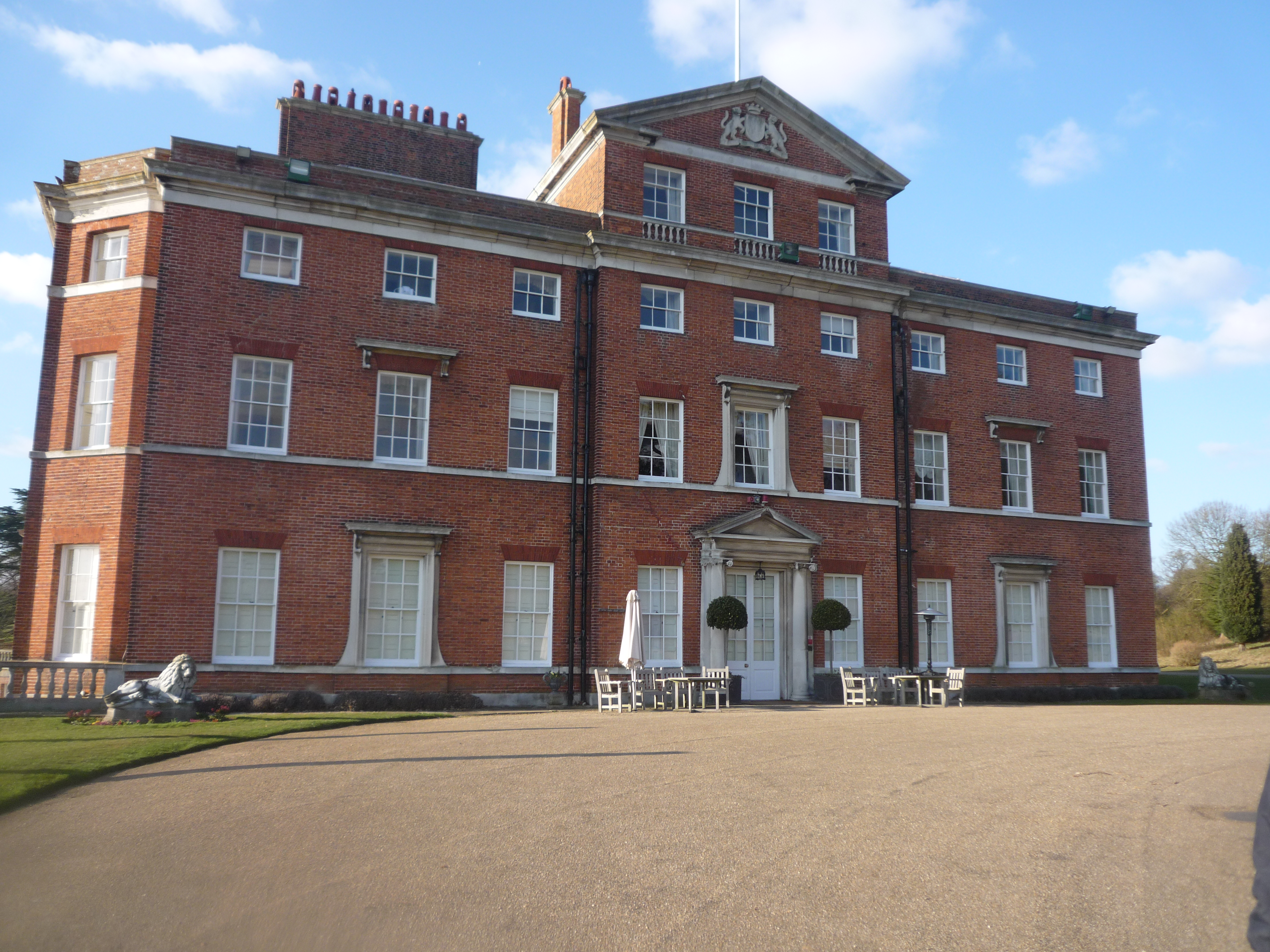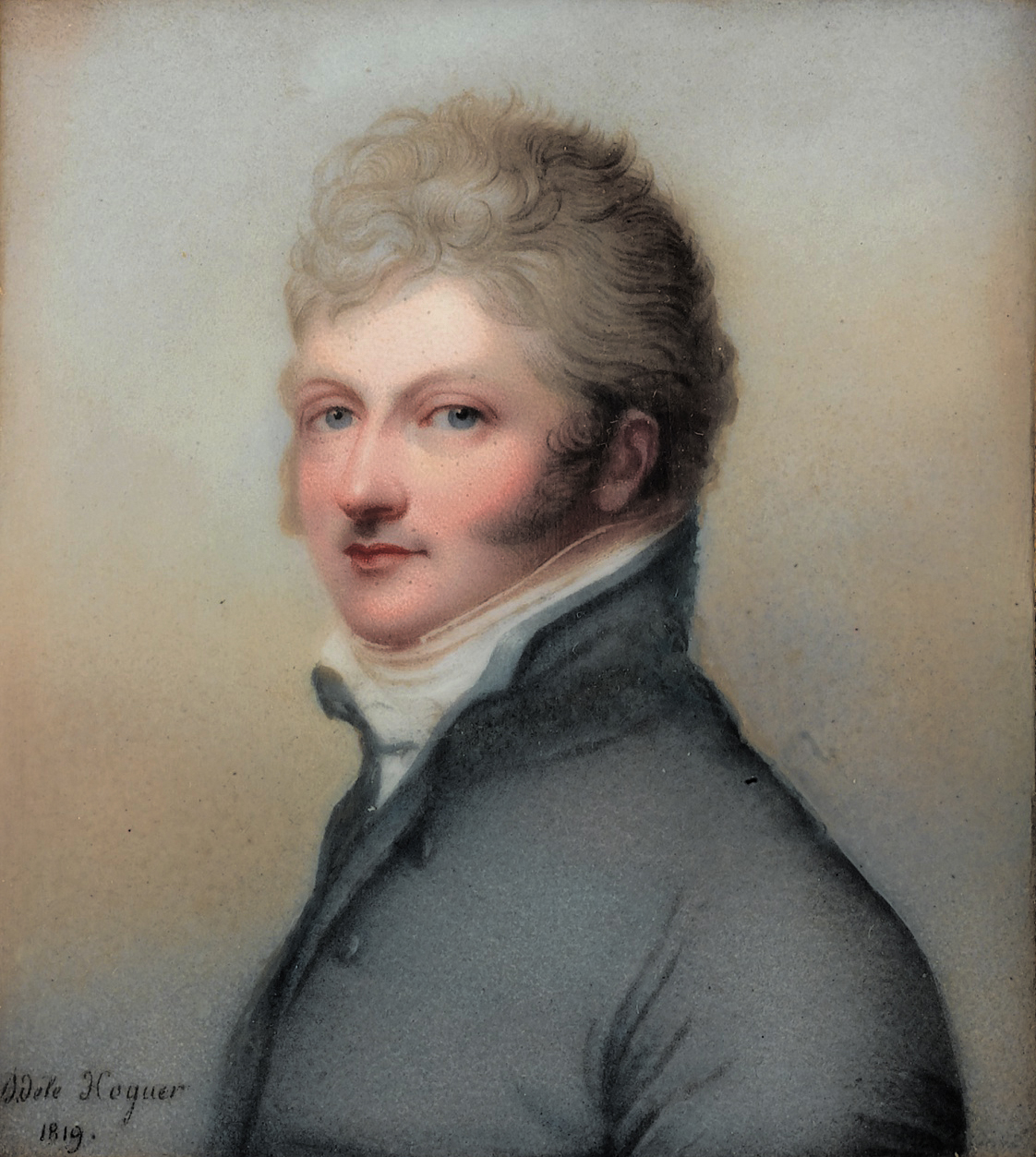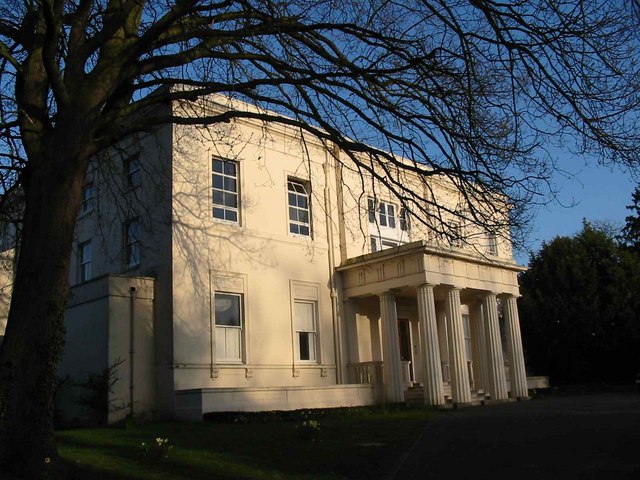|
George Bingham, 4th Earl Of Lucan
Charles George Bingham, 4th Earl of Lucan, KP (8 May 1830 – 5 June 1914), styled Lord Bingham from 1839 to 1888, was an Irish peer and soldier. He was the eldest son of George Bingham, 3rd Earl of Lucan and Lady Anne Brudenell. His maternal grandparents were Robert Brudenell, 6th Earl of Cardigan and Penelope Anne Cooke. He was educated at Rugby School and entered the Army. He became Lieutenant-Colonel of the Coldstream Guards and served as aide-de-camp to his father, who commanded the cavalry division during the Crimea War. He succeeded his father to the earldom in 1888. He was elected a Member of Parliament for Mayo from 1865 to 1874. He was appointed Vice-Admiral of Connaught in 1889, and Lord Lieutenant and Custos Rotulorum for County Mayo in 1901. He was created a Knight of St. Patrick in 1898. He married Lady Cecilia Catherine Gordon-Lennox. She was the youngest daughter of Charles Gordon-Lennox, 5th Duke of Richmond and Lady Caroline Paget. Caroline was the eldest da ... [...More Info...] [...Related Items...] OR: [Wikipedia] [Google] [Baidu] |
Order Of St Patrick
The Most Illustrious Order of Saint Patrick is a dormant British order of chivalry associated with Ireland. The Order was created in 1783 by King George III at the request of the then Lord Lieutenant of Ireland, The 3rd Earl Temple (later created Marquess of Buckingham). The regular creation of knights of the Order lasted until 1922, when most of Ireland gained independence as the Irish Free State, a dominion within what was then known as the British Commonwealth of Nations. While the Order technically still exists, no knight of St Patrick has been created since 1936, and the last surviving knight, Prince Henry, Duke of Gloucester, died in 1974. Charles III, however, remains the Sovereign of the Order, and one officer, the Ulster King of Arms (now represented in the office of Norroy and Ulster King of Arms), also survives. St Patrick is patron of the order; its motto is '' Quis separabit?'', Latin for "Who will separate s": an allusion to the Vulgate translation of Rom ... [...More Info...] [...Related Items...] OR: [Wikipedia] [Google] [Baidu] |
British Army
The British Army is the principal land warfare force of the United Kingdom, a part of the British Armed Forces along with the Royal Navy and the Royal Air Force. , the British Army comprises 79,380 regular full-time personnel, 4,090 Gurkhas, and 28,330 volunteer reserve personnel. The modern British Army traces back to 1707, with antecedents in the English Army and Scots Army that were created during the Restoration in 1660. The term ''British Army'' was adopted in 1707 after the Acts of Union between England and Scotland. Members of the British Army swear allegiance to the monarch as their commander-in-chief, but the Bill of Rights of 1689 and Claim of Right Act 1689 require parliamentary consent for the Crown to maintain a peacetime standing army. Therefore, Parliament approves the army by passing an Armed Forces Act at least once every five years. The army is administered by the Ministry of Defence and commanded by the Chief of the General Staff. The Brit ... [...More Info...] [...Related Items...] OR: [Wikipedia] [Google] [Baidu] |
Sir Matthew Lamb, 1st Baronet
Sir Matthew Lamb, 1st Baronet (1705 – 6 November 1768) was a British barrister and politician. He was the grandfather of Prime Minister William Lamb, 2nd Viscount Melbourne. Lamb was the son of Matthew Lamb, of Southwell, Nottinghamshire, and nephew of Peniston Lamb. His brother was Robert Lamb, bishop of Peterborough. He sat as member of parliament for Stockbridge between 1741 and 1747 and for Peterborough between 1747 and 1768. In 1755 he was created a Baronet, of Brocket Hall in Hertfordshire. He married with Charlotte, daughter and heiress of Thomas Coke who succeeded to Melbourne Hall in Derbyshire. He died in November 1768 and was succeeded in the baronetcy by his son Peniston, who was raised to the peerage as Viscount Melbourne in 1770. His daughter Charlotte married Henry Belasyse, 2nd Earl Fauconberg Henry Belasyse, 2nd Earl Fauconberg (13 April 1742 – 23 March 1802) was a British politician and peer. Family Fauconberg was the son of Thomas Belasyse, 1st Ea ... [...More Info...] [...Related Items...] OR: [Wikipedia] [Google] [Baidu] |
Thomas Belasyse, 1st Earl Fauconberg (second Creation)
Thomas Belasyse, 1st Earl Fauconberg (27 April 1699 – 8 February 1774) was a British peer. Fauconberg was the son and heir of Thomas Belasyse, 3rd Viscount Fauconberg, by his wife Bridget Gage, a daughter of Sir John Gage, 4th Baronet. He was raised as a Roman Catholic, but made a public abjuration of the faith and converted to the Church of England. Fauconberg succeeded to his father's viscountcy on 26 November 1718. He served as a Lord of the Bedchamber to George II between 1738 and 1760, and was made a member of the Privy Council. On 16 June 1756, he was created Earl Fauconberg in the Peerage of Great Britain The Peerage of Great Britain comprises all extant peerages created in the Kingdom of Great Britain between the Acts of Union 1707 and the Acts of Union 1800. It replaced the Peerage of England and the Peerage of Scotland, but was itself re .... He married Catherine Betham, the daughter of John Betham, on 5 August 1726. He was succeeded in his titles by his ... [...More Info...] [...Related Items...] OR: [Wikipedia] [Google] [Baidu] |
Sir John Bingham, 5th Baronet
Sir John Bingham, 5th Baronet (1690 – 21 September 1749) was an Irish politician. He was the eldest son of Sir George Bingham, 4th Baronet, and his first wife Mary Scott. Bingham was educated at the Middle Temple. He was appointed High Sheriff of Mayo in 1721 and was Governor of County Mayo. In 1727, he entered the Irish House of Commons for County Mayo, the same constituency his father had represented before, and sat for it until his death in 1749. In 1730, he succeeded his father as baronet. By 1730, he married Anne Vesey, daughter of Agmondisham Vesey and had five daughters and three sons. Bingham died in 1749 and was buried at Castlebar. He was succeeded in the baronetcy successively by his sons John and Charles Charles is a masculine given name predominantly found in English and French speaking countries. It is from the French form ''Charles'' of the Proto-Germanic name (in runic alphabet) or ''*karilaz'' (in Latin alphabet), whose meaning was " .... Referenc ... [...More Info...] [...Related Items...] OR: [Wikipedia] [Google] [Baidu] |
Robert Brudenell
Robert Brudenell (20 September 1726 – 20 October 1768) was a British army officer and Member of Parliament. Brudenell was the third son of the 3rd Earl of Cardigan and Elizabeth Bruce and a younger brother of the 1st Duke of Montagu and 4th Earl of Cardigan and the 5th Earl of Cardigan. He was educated at Winchester College and Oriel College, Oxford; on 27 January 1759, he married Anne Bishopp, a daughter of Sir Cecil Bishopp, 6th Baronet. Brudenell was commissioned as Ensign in the First Foot Guards in 1748, promoted to Captain in 1751, Lieutenant-Colonel in 1758 and Colonel in 1762. In 1763 he became colonel of the 16th Regiment of Foot, a post he held until his removal to the 4th Regiment of Foot in 1765. He was also Lieutenant-Governor of Windsor Castle from 1752, and Vice-Chamberlain to Queen Charlotte from 1766 until his death. He served as MP for Great Bedwyn from 1756 to 1761 and for Marlborough from 1761 to 1768. However, he took little interest in pol ... [...More Info...] [...Related Items...] OR: [Wikipedia] [Google] [Baidu] |
Henry Belasyse, 2nd Earl Fauconberg
Henry Belasyse, 2nd Earl Fauconberg (13 April 1742 – 23 March 1802) was a British politician and peer. Family Fauconberg was the son of Thomas Belasyse, 1st Earl Fauconberg and Catherine Betham. Career He served as the Member of Parliament for Peterborough between 1768 and 1774, sitting for the Whig party. Following his succession to his father's title in 1774, Fauconberg assumed his seat in the House of Lords. He was a Lord of the Bedchamber from 1777 until his death in 1802, and was Custos Rotulorum and Lord Lieutenant of the North Riding of Yorkshire over the same period. In 1779 he raised a Yorkshire regiment of fencible infantry, 'Lord Fauconberg's Regiment' or 'Fauconberg's Fencibles' of which he was colonel. They were disbanded in 1783. Marriages and issue On 29 May 1766, he married the Hon. Charlotte Lamb, the daughter of Sir Matthew Lamb, 1st Baronet and sister of Peniston Lamb, 1st Viscount Melbourne. Together they had four daughters: *Lady Anne Belasyse (1760– ... [...More Info...] [...Related Items...] OR: [Wikipedia] [Google] [Baidu] |
Margaret Bingham
Margaret Bingham, Countess of Lucan (1740 – 27 February 1814)Ernest Radford, "Bingham, Margaret, Countess of Lucan (c. 1740–1814)", rev. V. Remington, ODNB, Oxford University Press, 200Retrieved 4 October 2014/ref> was an English painter, copyist and poet, whose art was much admired by Horace Walpole. Her pseudonymous ''Verses on the Present State of Ireland'' made a strong protest against Britain's treatment of the country. Personal life Margaret Bingham was born Margaret Smyth in Devon, England, the younger of the two daughters of James Smith MP of Canons' Leigh, Devon, and his wife Grace. In 1760, she married Charles Bingham, later 1st Earl of Lucan. She died in 1814 at St James's Place in London and was survived by five children: * Lady Lavinia Bingham, who married George Spencer, 2nd Earl Spencer and had issue, *Lady Eleanor Margaret Bingham, *Lady Louisa Bingham, *Lady Anne Bingham, and * Hon. Richard Bingham, who succeeded his father in the title. Work As an arti ... [...More Info...] [...Related Items...] OR: [Wikipedia] [Google] [Baidu] |
Charles Bingham, 1st Earl Of Lucan
Charles Bingham, 1st Earl of Lucan (22 September 1735 – 29 March 1799), known as Sir Charles Bingham, 7th Baronet, from 1750 until 1776, was an Irish peer and politician. Background He was the second son of Sir John Bingham, 5th Baronet, and his wife Anne Vesey, daughter of Agmondesham Vesey. In 1750, Bingham succeeded his older brother John as baronet. Career Bingham was appointed High Sheriff of Mayo in 1756. He was elected as Member of Parliament for both Castlebar and Mayo in 1761, and chose to sit for the latter. He was returned to the Irish House of Commons until 1776, when he was elevated to the Peerage of Ireland as Baron Lucan, of Castlebar in the County of Mayo. As his title enabled him only to take a seat in the Irish House of Lords, Bingham was not restricted from entering the British House of Commons for Northampton in 1782, representing it until two years later. In 1795, Bingham was further ennobled in the Peerage of Ireland as Earl of Lucan, of Castle ... [...More Info...] [...Related Items...] OR: [Wikipedia] [Google] [Baidu] |
Richard Bingham, 2nd Earl Of Lucan
Richard Bingham, 2nd Earl of Lucan (4 December 1764 – 30 June 1839), styled The Honourable from 1776 to 1795 and subsequently Lord Bingham until 1799, was an Irish peer and Tory politician. Background He was the only son of Charles Bingham, 1st Earl of Lucan, and his wife Margaret Smith, daughter of Sir James Smith. Bingham was educated at The Royal College of St Peter in Westminster and Christ Church, Oxford. In 1799, he succeeded his father as earl. Career Bingham entered the British House of Commons for St Albans in 1790, representing the constituency until 1800. After the Act of Union in the following year, he sat as representative peer in the House of Lords from 1802 until his death in 1839. Family On 26 May 1794, he married Lady Elizabeth Belasyse, third daughter of Henry Belasyse, 2nd Earl Fauconberg and former wife of Bernard Howard, 12th Duke of Norfolk, and had by her five daughters and two sons. They separated in 1804. Bingham died, aged 74 at his residence ... [...More Info...] [...Related Items...] OR: [Wikipedia] [Google] [Baidu] |
George Charles Bingham, 5th Earl Of Lucan
Colonel George Charles Bingham, 5th Earl of Lucan, 1st Baron Bingham, (13 December 1860 – 20 April 1949), known by the courtesy title of Lord Bingham from 1888 to 1914, was a British soldier and Conservative politician. Early life Lucan was the son of Charles Bingham, 4th Earl of Lucan, and Lady Cecilia Catherine Gordon-Lennox, one of the three daughters of Charles Gordon-Lennox, 5th Duke of Richmond. He was educated at Harrow School and then at the Royal Military College, Sandhurst. Military career In 1881, from Sandhurst, Lucan was commissioned into the Rifle Brigade. He fought in the Bechuanaland Expedition (1884–1885) and was awarded the Order of the Nile 3rd Class. He first retired with the rank of captain in 1896. In 1900 he joined the 1st London Rifle Volunteers (territorial army) as a major, rising to the rank of colonel. He fought again in the First World War, during which he was mentioned in despatches. He gained the rank of Honorary Brigadier-General in 1917 an ... [...More Info...] [...Related Items...] OR: [Wikipedia] [Google] [Baidu] |
Diana, Princess Of Wales
Diana, Princess of Wales (born Diana Frances Spencer; 1 July 1961 – 31 August 1997) was a member of the British royal family. She was the first wife of King Charles III (then Prince of Wales) and mother of Princes William and Harry. Her activism and glamour made her an international icon, and earned her enduring popularity, as well as almost unprecedented public scrutiny. Diana was born into the British nobility, and grew up close to the royal family on their Sandringham estate. In 1981, while working as a nursery teacher's assistant, she became engaged to the Prince of Wales, the eldest son of Queen Elizabeth II. Their wedding took place at St Paul's Cathedral in 1981 and made her Princess of Wales, a role in which she was enthusiastically received by the public. The couple had two sons, William and Harry, who were then second and third in the line of succession to the British throne. Diana's marriage to Charles suffered due to their incompatibility and extramarital a ... [...More Info...] [...Related Items...] OR: [Wikipedia] [Google] [Baidu] |




